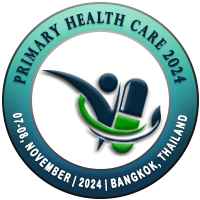
Bambang Rahardjo
Saiful Anwar General Hospital, IndonesiaTitle: Potential herbal medicine for management preeclampsia in low resources country
Abstract
Herbal medicine has grown in worldwide. The prevalence of herbal medicine use during pregnancy is between 7% to 55%, depending upon the geographic area, sosio-culture aspects, ethnicity and local wisdoms. In the Western world, prevalence estimates of herbal medicine use in pregnancy varies considerably across countries, ranging from 52- 58% in Australia and the United Kingdom to 40- 48% in Norway and Italy and 6-9% in Canada and the US. In low resourches country such as Afrika and South East Asia, had been uses a variety of traditional medicines for their primary health care. Surveys on the use of herbal medicines in pregnancy have reported a wide range of herbal medicine use. According to the World Health Organization (WHO), 80% of the world’s population, especially in developing countries, uses a variety of traditional medicines for their primary health care. The top herbals medicines used in pregnancy have been found to include ginger, cranberry, raspberry, echinacea and chamomile, with geographical variations. According to the World Health Organization, there are several challenges associated with the herbal medicine practice, which are related to regulatory status, assessment of safety and efficacy, quality control, safety monitoring, and lack of knowledge about herbal medicine within national drug regulatory authorities. Pre-eclampsia is a common disorder that complicates 7% to 10% of pregnancies and can progress to a life-threatening situation for both the mother and the fetus. A number of medications have been used in an attempt to prevent and treat pre-eclampsia. the disorder of tone vascularity, immunology disturbance, genetic anomaly, and inflammation theory. Various concepts of the pathogenesis of preeclampsia have been widely described, but the characteristics of preeclampsia remain the same: an excessive systemic inflammation and endothelial dysfunction. However, the pathogenesis of the disease is not completely understood, a generalized inflammatory response is suggested to play an important role in the pathogenesis.. Several drug had been used to prevent preeclampsia, such as low dose aspirin and calsium. Several studies also evaluating the utility of pravastatin in preventing preeclampsia. In the developing countries with low resourches and non integrated health system, many pregnant women use herbal medicine in pregnancy. In the other hand, there’s many medical plants in Africa and Asia that have potential benefit for pregnant women. Current studies conducted to explore biological effect of herbal plants, such as ginger, curcumin, olive oil, garlic etc. Many herbal plants have some biological effect such as anti-oxidant and anti-inflammatory that could used in preventive and treatment of preeclampsia. Given the gaps in understanding the underlying pathophysiology of preeclampsia, the mechanisms by which many of these agents are area where more research in needed.
Biography
Bambang Rahardjo, Medical staff of Obstetric and
Gynaecology Departement in Saiful Anwar General Hospital, Indonesia

